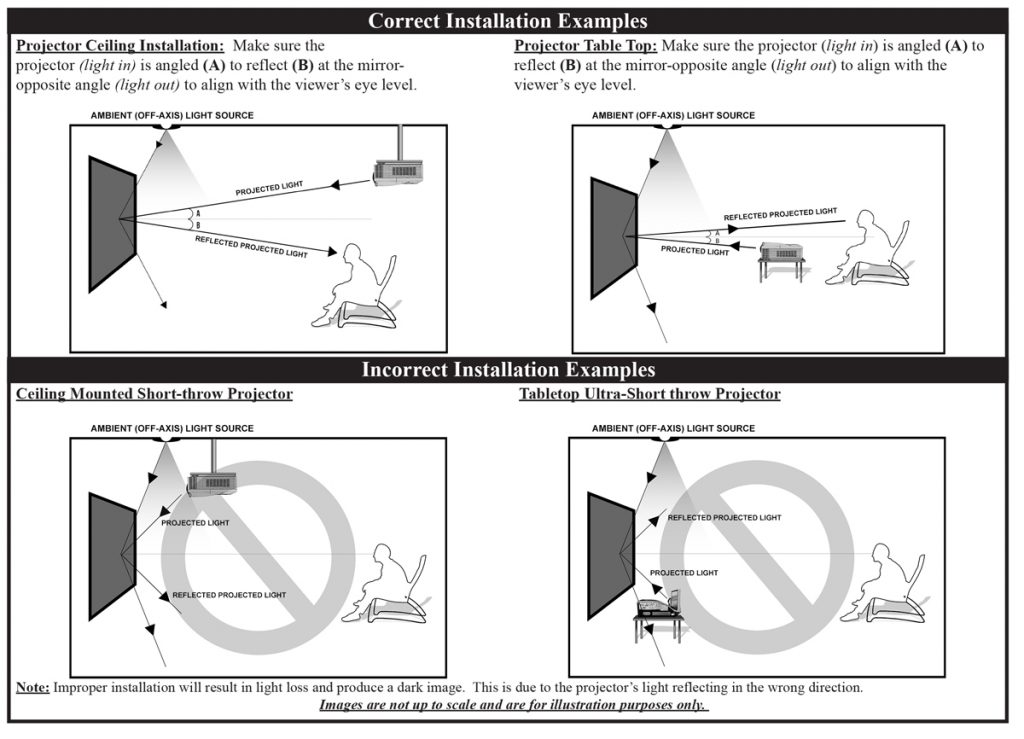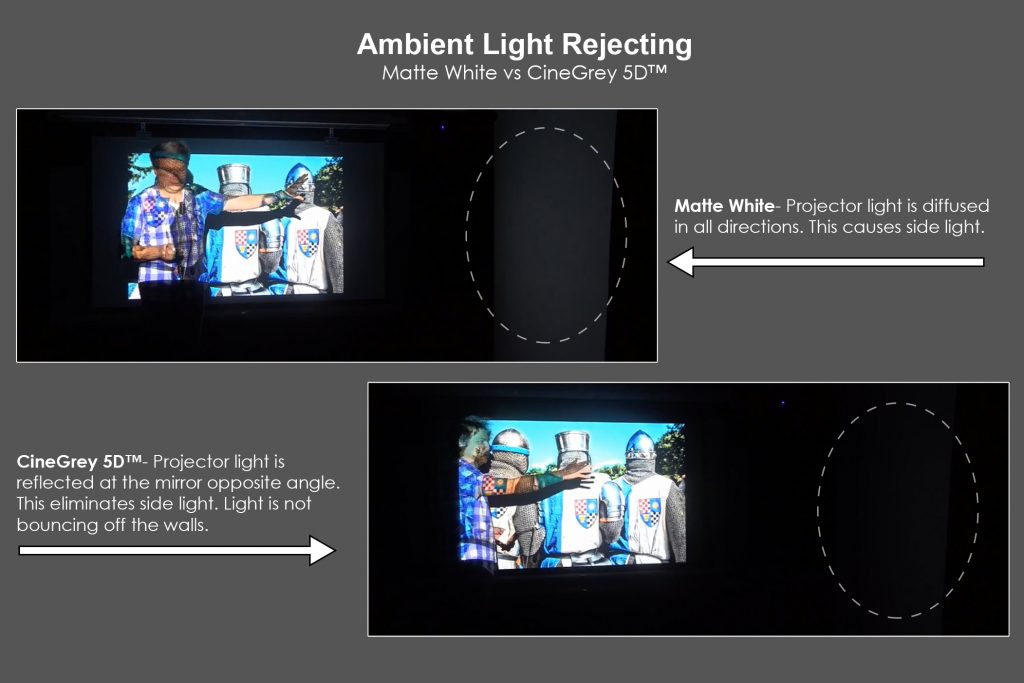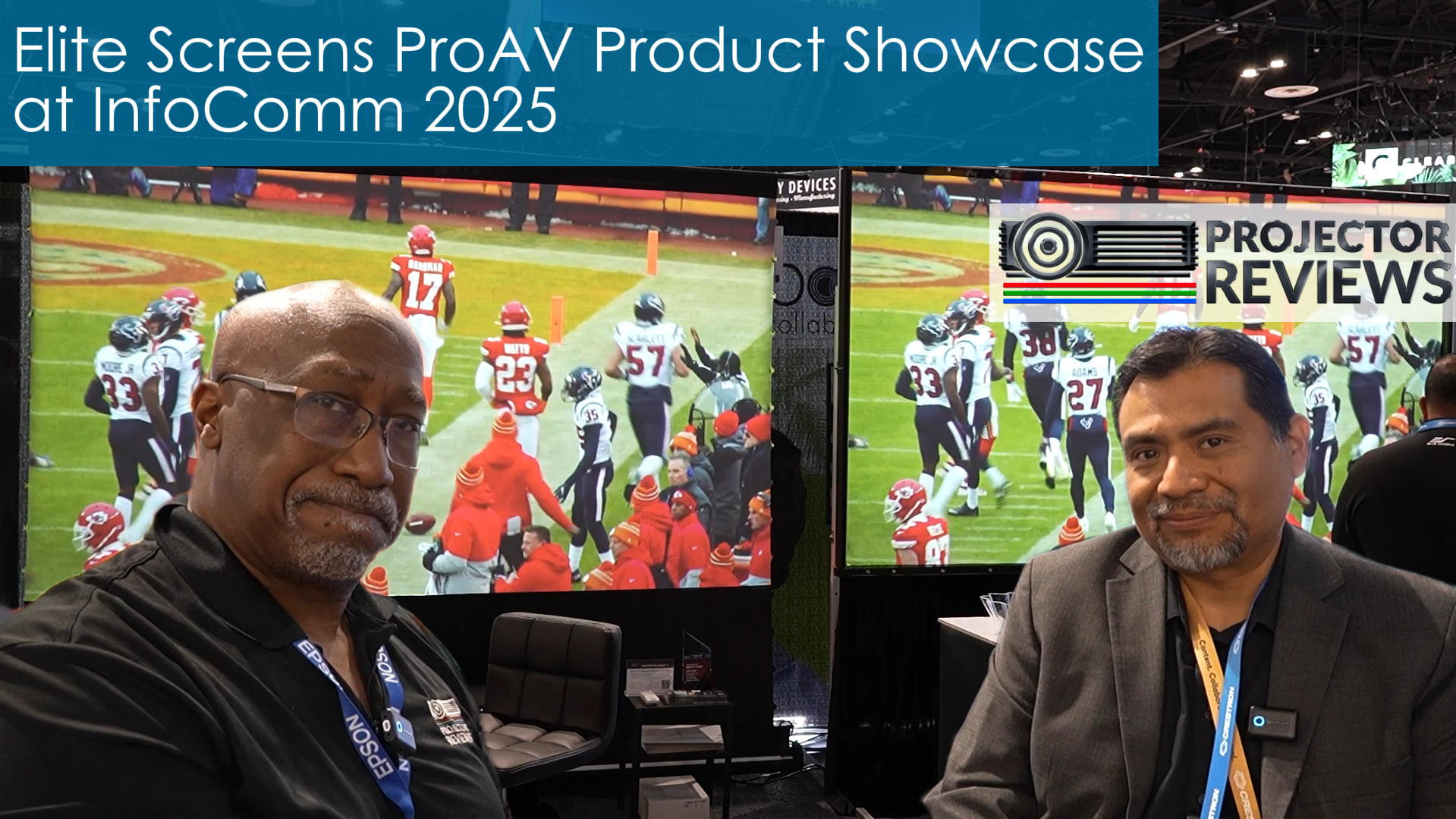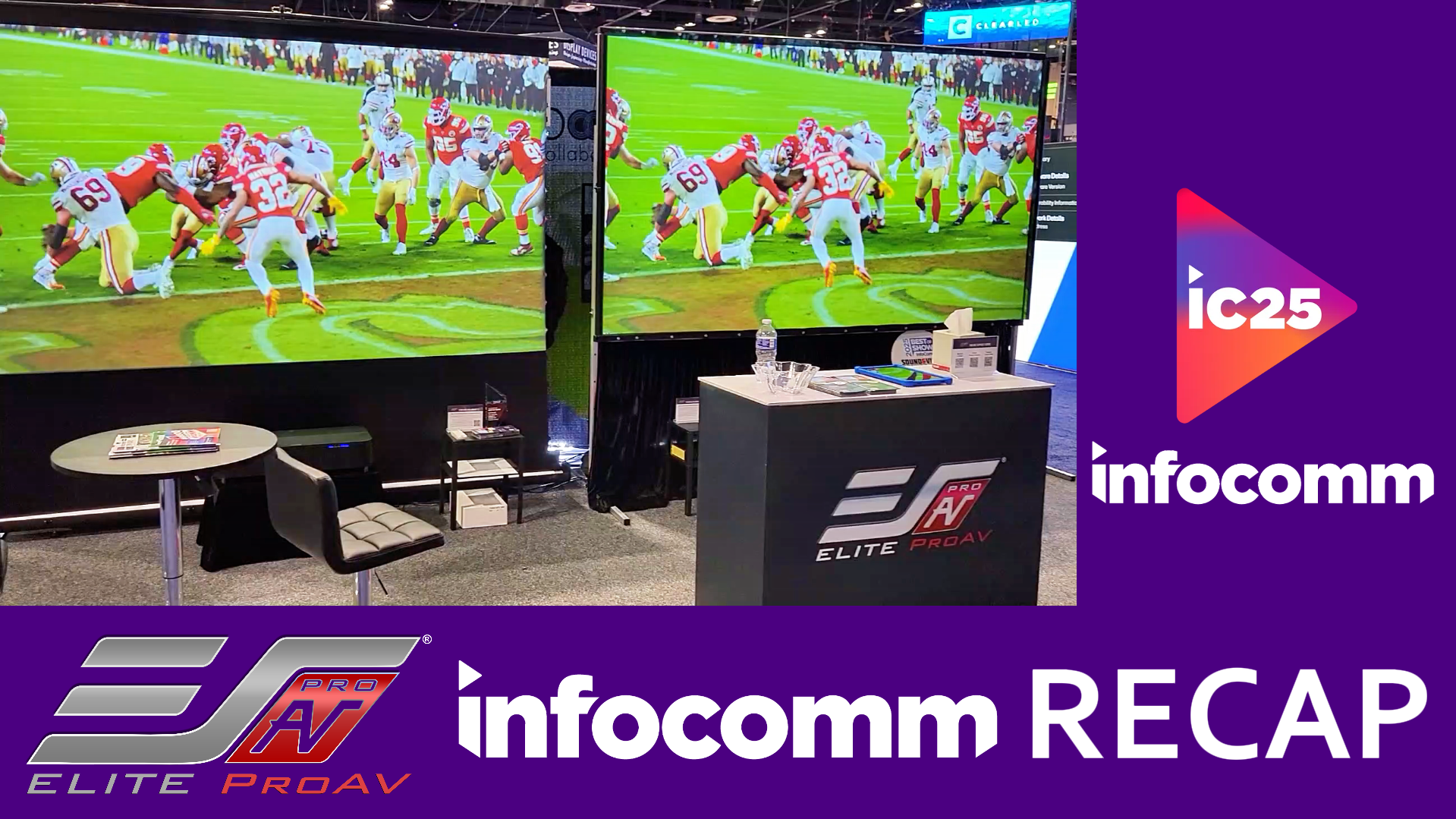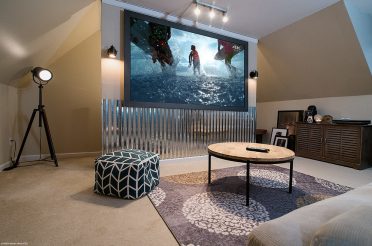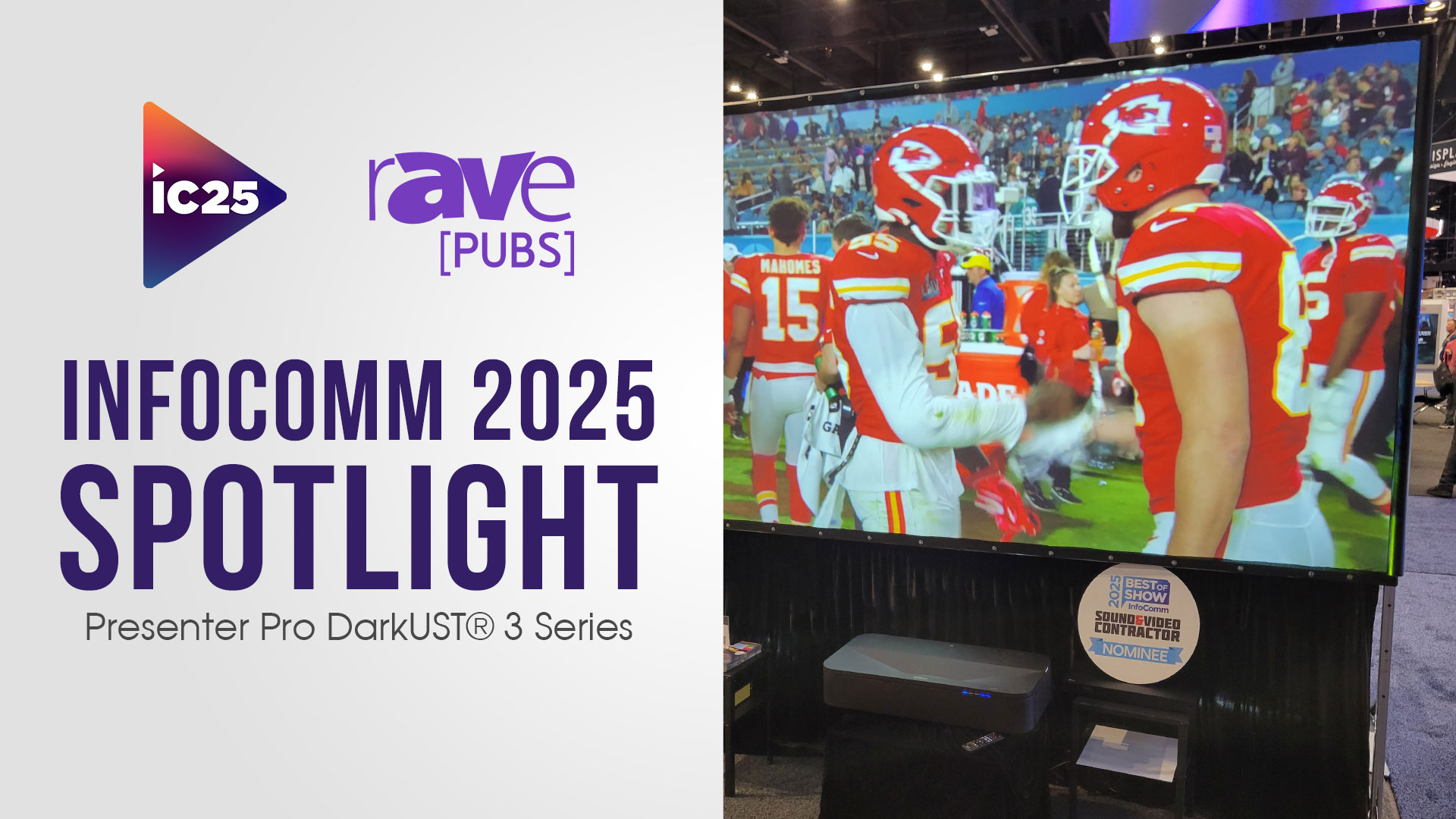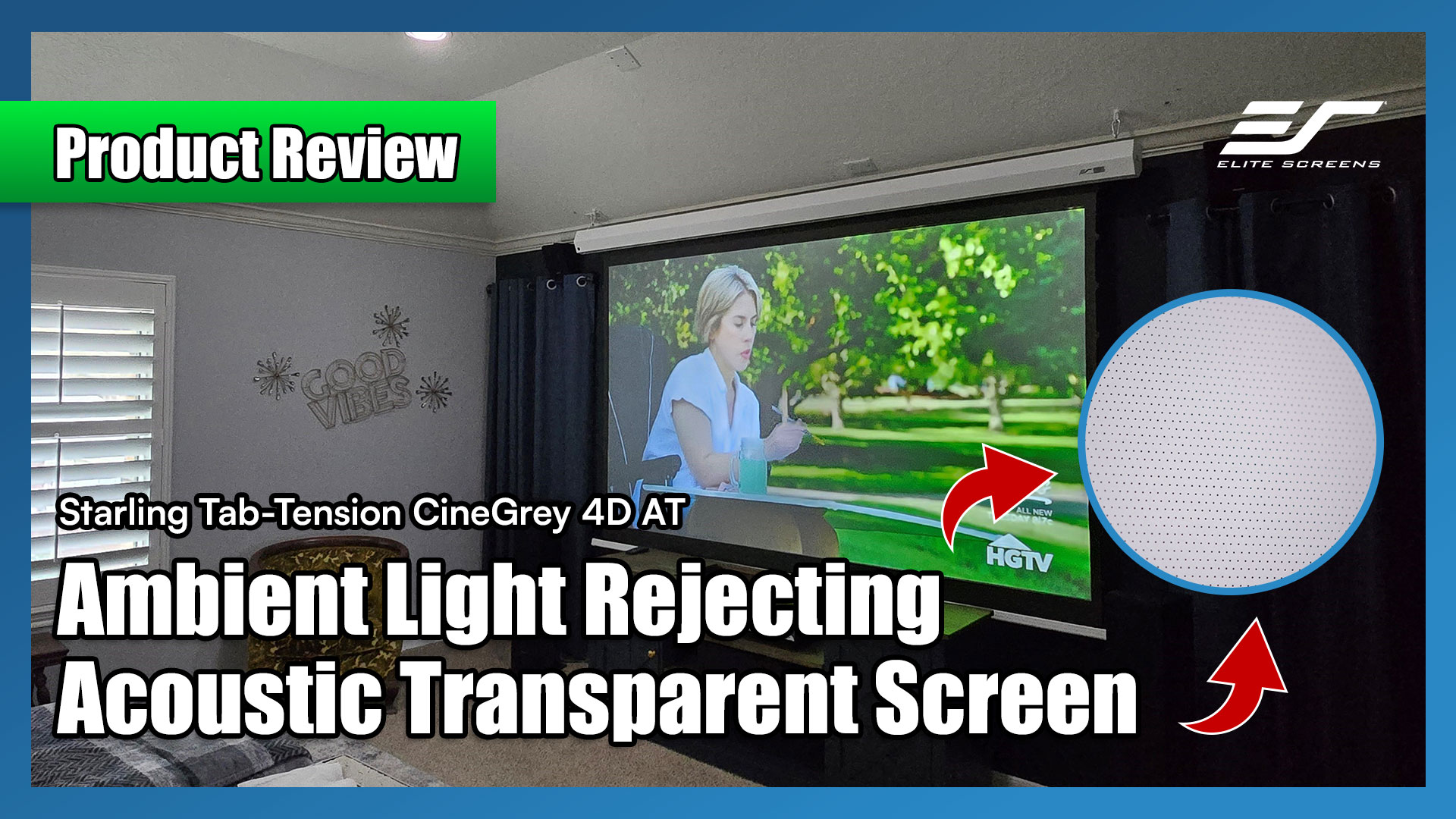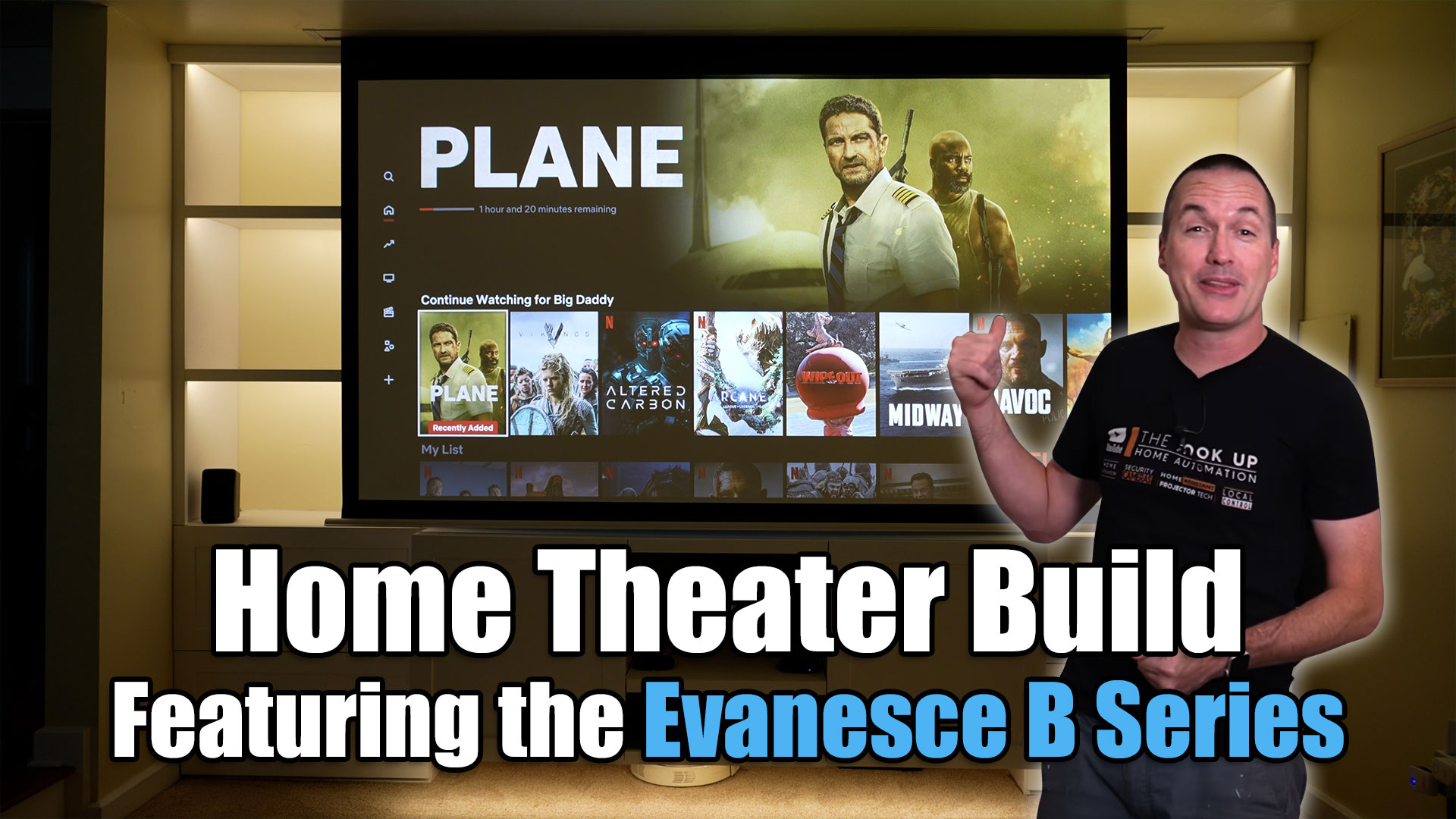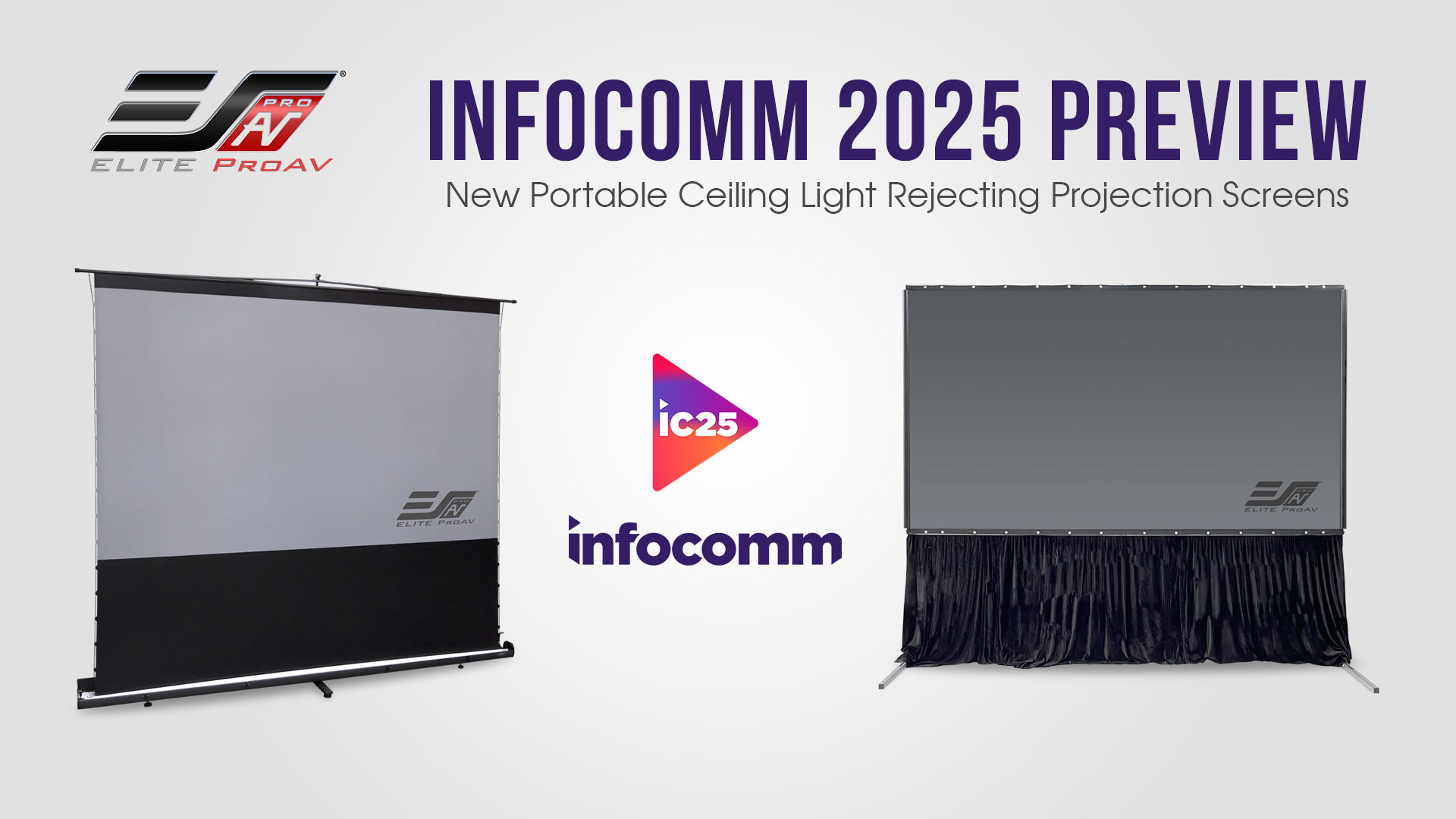A: Although matte white materials such as CineWhite® are ideal for environments where room lighting can be controlled, the image is easily washed out by ambient light. Ambient Light Rejecting (ALR) materials such as the CineGrey 5D® are suitable for environments where there are high levels of indirect (ambient) light. This material trades off on the wide diffusion uniformity of white materials in favor of a brighter (angular reflective) image. Elite’s CineGrey 5D® incorporates a diffusion layer over a highly reflective surface which scatters ambient light while improving picture performance with a brighter image. This includes color neutrality with enhanced black levels and improvement over Active 3D presentations.
A: For the best possible results, an anamorphic lens is recommended. However, it is possible to get a 2.35:1 screen format as long as you can live with the “black bars” created when a mismatched 16:9 native aspect ratio projecto is set up to fit a wider projection screen format. It is simply a matter of personal preference.
A: In addition to an appealing aesthetic appearance, the advantage of having a black velvet covered frame is to help absorb projector overshoot.
A: The SableFrame only has models with our CineWhite screen material and the frame design on both of these series vary. Please see this PDFfor details.
A: Here is a complete list of the model numbers for the ezFrame Series: R84WV1, R100WV1, R120WV1, R135WV1, R150WV1, R180WV1, R200WV1, R84H1, R84WH1, R92H1, R92WH1, R100H1, R100WH1, R106H1, R106WH1, R110WH1, R120H1, R120WH1, R135H1, R135WH1, R150H1, R150WH1, R165WH1, R180WH1, R200WH1, R109WX1, R114WX1, R144WX1, R171WX1, R206WX1, R100DHD5, R110DHD5, R120DHD5, R135DHD5, R150DHD5, R84RH1, R92RH1, R100RH1, R106RH1, R110RH1, R120RH1, R135RH1, R171RX1, R226RX1, R84WH1-A1080P2, R92WH1-A1080P2, R100WH1-A1080P2, R106WH1-A1080P2, R110WH1-A1080P2, R120WH1-A1080P2, R150WH1-A1080P2, R165WH1-A1080P2, R180WH1-A1080P2, R84WH1-A1080P3, R92WH1-A1080P3, R100WH1-A1080P3, R110WH1-A1080P3, R120WH1-A1080P3, R135WH1-A1080P3, R150WH1-A1080P3, R84DH1, R100DH1, R84RV1, R100RV1, R120RV1, R135RV1, R150RV1, R180RV1, R200RV1
A: Each Elite Screens’ model number starts with the product series name. Follow by case color (if applicable, certain models only available in one color), screen material, screen aspect ratio and product series version. Lastly, extra black drop and its length (if applicable). Here is an example.
R200WH1
- 200: 200” Diagonal
- R: ezFrame
- W: CineWhite® Material (H: CineGrey / R: Wraith Veil)
- H: 16:9 Format (V: 4:3)
- 1: Version 1
- A1080P: Acoustic Sound Transparent Material
- A1080P2: New Acoustic Sound Transparent Material
- A4K: Acoustic Sound Transparent Material for 4K projectors
A: 3D imaging occurs at a lower level of brightness than regular 2D presentations. Also, it is difficult to maintain polarization on regular projection screen materials. The benefits of Passive 3D polarized silver projection screens are that they increase the brightness of projected 3D images while allowing them to maximize retaining image polarization levels. Lastly, its diffusion layer enhances contrast. Although passive 3D imaging can arguably be performed on other projection materials, the polarized silver materials optimize overall 3D performance with the best results.
Yes, the Airbright3D2 and Airbright5D projection screens are passive 3D polarized silver projection screens made for the specific reasons specified in the first part of this answer. The Airbright3D2 is the standard retail model while the Airbright5D has added contrast levels for enhanced contrast and diffusion moderation.
A: Passive 3D occurs in real time with both eyes seeing an actual picture as opposed to the alternating right-Left eye flickering of active 3D technology. The advantage in this is that the image is brighter because it is simultaneously shown to both eyes. With Active 3D the glasses obstruct the vision of one eye while allowing the other to see the picture alternating at about 60 exposures per eye per second. Essentially the viewer is blindfolded half the time without really being aware of it. The “flickering” of Active 3D technology is that cross-talk and shadowing artifacts occur more easily. It also has a higher tendency to create eye-discomfort in viewers. Passive 3D allows viewers to see the image more comfortably with greater brightness and clarity. Passive 3D glasses are also inexpensive so that they may be easily obtained in quantity and do not suffer from mechanical malfunction like the electrically powered active 3D glasses.
Projector Placement for Angular-Reflective Screen
Notice to Installer:
Please use the following installation instructions to obtain superior optical performance from the Angular Reflective ALR (Ambient Light Rejecting) Screen.
- Angular-Reflective material is not compatible with ultra/short-throw projectors
- Minimum lens throw ratio 1.5x image width
- Ambient light must not come from the same direction as the projector
Since angular-reflective means that the projected image will reflect at the mirror-opposite angle, it is important to position the projector so that the viewer will get the best possible image.
- Step 1: Establish the general “eye level” of the viewers
- Step 2: Set the appropriate projection level
- Step 3: Adjust the screen height level and projection angle
Input Angle (A) = Output Angle (B) aligns with the viewer’s angle
A: The CineGrey 5D® and CineGrey 3D® is great for dark room environment also, but we must understand its limitations.
First of all, both materials have narrow viewing angles. So if you wish to have a wide seating arrangement after 80 degrees, you will notice a drop in brightness.
Second, because they are higher gain screens they reflect more projector brightness. This may tire your eyes, so we recommend using a less brighter mode if your projector has a such setting.
If that is not a problem, then these materials will work. And the best thing is, because they are angular reflective material, the projector’s light will not diffuse in all directions like a matte white material. Meaning that they will not scatter the projector’s light and create side lighting. Thus, eliminating the need to absorb it with black velvet or paint a room really dark.
Third, because both of these materials are made with a neutral gray substrate, the color balance and temperature will be exceptional. The dark gray also enhances contrast and great color saturation.
